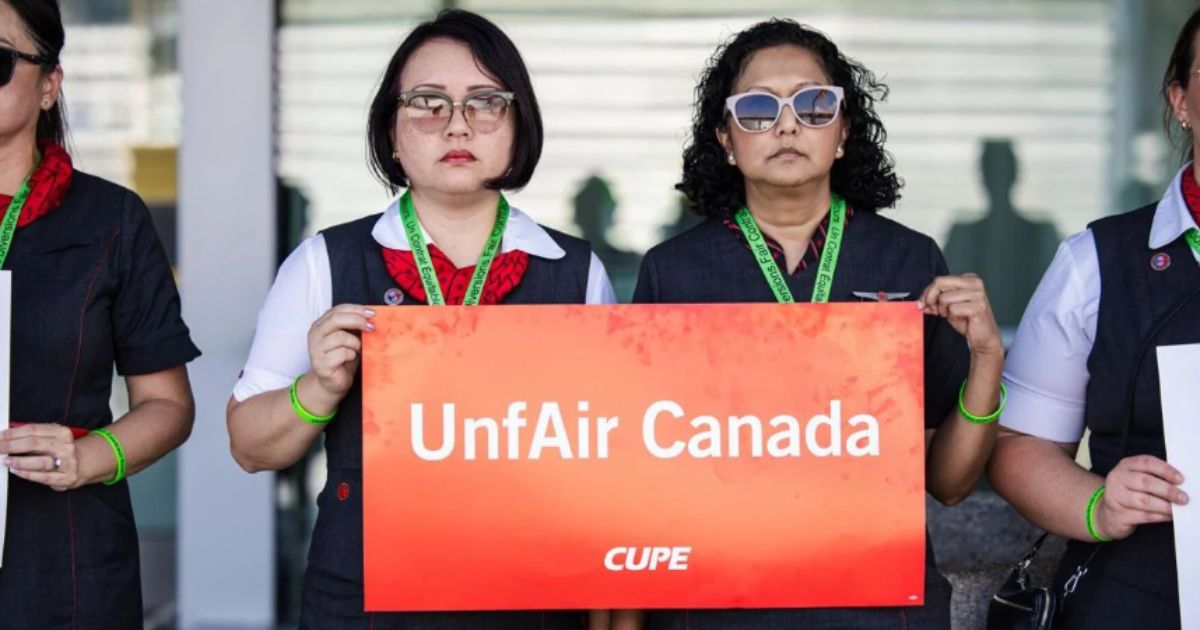Air Canada Strike is rapidly becoming a major summer crisis—just as the busy travel season peaks, more than 10,000 flight attendants are poised to walk off the job after issuing a 72-hour strike notice. The dispute centers on wages, unpaid labor for ground work, and compensation that hasn’t kept pace with inflation. As Canada’s largest airline scales back operations, passengers and travel partners are grappling with potentially massive disruption.
Strike Notice Triggers Lockdown and Flight Suspensions
On Wednesday, the union representing Air Canada’s flight attendants delivered a 72-hour strike notice, scheduled to begin at 1 a.m. ET on Saturday. In response, the airline issued a simultaneous lockout notice—effectively a shutdown of operations starting shortly after the strike’s launch. This escalation follows weeks of stalled talks, with little sign of a compromise.
Details of the Tentative Pay Deal and Union Pushback
Air Canada proposed a 38% total compensation increase over four years, including a 25% raise in year one, plus improvements to pensions, benefits, and rest time. However, the union argues that the offer falls short—failing to match inflation or properly compensate for pre- and post-flight duties. Flight attendants say they currently perform an average of 35 hours of unpaid ground work per month, from safety checks to boarding prep, and are seeking full compensation for all labor.
Massive Disruption for Travelers
Starting Thursday, Air Canada will begin gradually cancelling flights, ramping up through Friday, and reaching full operational shutdown by Saturday. Both mainline and Air Canada Rouge services are affected, with regional partners Jazz and PAL Airlines covering just 20% of typical volume. In total, around 130,000 passengers a day could face disruption—leaving many stranded or scrambling for alternatives.
Refunds, Rebooking, and Alternative Options
The airline says customers with cancelled flights will receive full refunds and will be rerouted where possible, including through agreements with other Canadian and global carriers. Despite these efforts, non-peak airports and remotely scheduled crews add complexity. Competitors like WestJet and Porter Airlines are monitoring booking trends, but capacity remains limited—leaving passengers in limbo.
Airport Protests Highlight Crew Distress
Earlier this week, hundreds of flight attendants held protests at major airports, including Toronto Pearson, to underscore their grievances. Many are women who say financial strain has forced them into extreme measures such as food bank usage or shared living. The protests didn’t disrupt flights yet—but they contributed to mounting pressure as federal mediators stepped in to encourage resolution.
What’s at Stake—and What to Watch Next
- Government Arbitration: Air Canada has asked for federal intervention to impose binding arbitration. The government is watching but so far hasn’t acted.
- Economic Ripples: Extended disruption risks higher ticket prices, lost tourism revenue, and stress on connecting carriers.
- Contract Resolution: Will there be a last-minute pact before Saturday—or a prolonged conflict?
External Insight
For a clear breakdown of how refunds and rerouting will work, read this comprehensive explainer from **India Times**: “Air Canada strike could ground 130,000 passengers daily—here’s how refunds and alternative travel will work”.
What This Means for the Travel Industry
The **air canada strike** underscores a broader shift in airline labor dynamics. As flight attendants push for pay equity across all responsibilities, the fallout serves as a warning: essential but underpaid work can no longer be taken for granted. For travelers, airports, and governments, adapting quickly is now frontline strategy.

